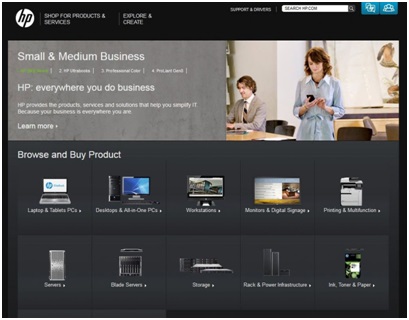A marketing plan can make or break business traction. Most entrepreneurs seem to understand this fact. In fact, according to Gartner CMO’s recent Spend Survey, 75% of organizations are expecting marketing budgets to increase this year. And with this sort of expectation, marketers just can’t afford for their marketing strategies to fail.
 Source: Gartner
Source: Gartner
However, there are common reasons that keep even the most well thought-out marketing strategies from working, and these should be addressed right away.
Here are the topmost marketing plan obstacles to delivering effective campaigns:
1. Creating A Generic Marketing Plan
Just knowing what products or services your business offers is not enough to create a winning marketing plan.
Study shows that generic marketing strategies do not work. So you need to tailor fit it according to your company’s needs.
Some examples of good, tailor-fit marketing strategies include:
- This step-by-step marketing plan by Coca-Cola
- This hip, culture-fit Starbucks marketing plan
The Value of A Creating A Tailor-Fit Marketing Plan:
HotPads is a map-based rental and real estate website that only had 400 views per month on their blog. The company wanted to increase existing traffic and convert them into returning audience without focusing on sponsored content.
Their marketing strategy involved hiring content creators from targeted locales who wrote original, engaging content for their readers that featured HotPads. The result? HotPads created 270 articles in less than a year, which led them to have a 4,000% increase in traffic within 7 months.
2. Not Knowing Your Business’ Value Proposition
Value propositions exist for a reason: to add more meat to what you’re offering your customers.
Tight industry competition drives companies to fight over a huge piece of the market pie. But the real challenge is not about attracting new ones—it’s all about keeping the loyalty of the audience that you do have.
Source: Marketing Experiments
Take, for instance, these two value props from Epson and HP (images above). For one, there is no clear differentiator between the two. The words sound professional and talk to business owners, but they do not stand out. If Epson and HP both use similar, generic value props, it lacks that forceful element in an effective marketing strategy that would sway a customer to choose one over the other and stick with them.
The Need for a Clearer, More Targeted Value Proposition:
You have to make sure that you know your business’ value proposition to be at par with your customer’s expectations and demands. Without it, what is there to stop them from doing business with your competitors?
To define your value prop, you need to identify how your products or services will add more value to your customers’ lives. It has to be specific and targeted to ease a pain point.
Lastly, differentiate how your product/service stand out among a sea of other companies providing the same product/service. Then let your customers know why you are the best in the market to give it to them.
Source: https://www.apple.com/macbook/
Apple’s marketing strategy is on point when it comes to featuring brilliant value props for each model in their phone and laptop line. Their value prop for the MacBook stands out, however, as it’s clever and witty–it highlights how lightweight this model is (the MacBook’s biggest differentiator from its competitors) while describing how its technology is ahead of its time.
3. Investing In High-Caliber Marketing Staff Too Early
Too often, business owners are tempted to hire the crème de la crème right at the onset. This can, however, prove to be counterproductive.
While having the best team for the job will go a long way in helping you execute a winning marketing strategy, it could also put a serious dent on your budget—a huge problem, especially for startups.
The Value of Hiring Slow:
Hiring high-caliber staff early in the game would take its toll on your time, money, and other resources.
You can start expanding your marketing team when you do not have an otherwise low-cost option or when time commitments force you to focus on growing your business.
The good news here is, you don’t necessarily have to hire in-house marketers. You can outsource marketing strategies to other experts in the field to help you start your campaign and keep it moving.
4. Targeting The Wrong Audience
When drafting your marketing strategies and campaigns, it is crucial to keep your audiences and their preferences at the core of every tactic. It is difficult to create a marketing strategy if you are not sure who will most likely benefit from what your business offers.
The Value of Targeting The Right Buyer Persona:
Targeting a huge number of people in hopes of getting more engagements means that you are wasting your energy on people who do not need your offerings.
On the flip side, being extra specific who your target market is allows you to send the right message to the right people who need your expertise at the right time.
Define your buyer personas by collecting data on their demographics, their hobbies, why they purchase from your brand, why they purchase from your competitors, and their pain points. Where do they hang out online? What do they want from services or products like yours?
You can use tools like Drip and Intercom to track and segment users based on their behavior. You can also use Typeform or SurveyMonkey to create surveys using questions that will help profile your customers.
Personalize your marketing efforts based on their tastes. Include strategic call-to-actions on your campaigns (e.g. landing pages, promotional merchandises, etc) to help them throughout their buying journey.
5. Failing in Making and Reviewing Your Marketing Strategy
Prior to starting your campaign, make sure that your organization follows a seamless approval process. Most companies make the mistake of redoing the marketing strategies that worked last year, expecting that they will get the same—or better—results this year.
Take, for instance, the infamous fall of Nokia. The company failed to jump on a rising trend that Apple and Google were starting to dominate. And when they did start producing smartphones with superior cameras, it was a little too late of an effort.
Although Nokia was acclaimed for its marketing strategies during its heyday–they were, after all, able to give mobile phones their reputation as fashion accessories–they also overestimated the strength of their brand. They stuck to what they knew, believing that they’ll be able to catch up even if they were late in the smartphone game.
The Value of an Updated Marketing Strategy:
One important lesson you have to remember is that the digital world offers tremendous opportunities to companies who are able to adapt to fast-changing customer preferences.
If you want to create a solid end-to-end marketing plan, make sure that you review your strategies and align them with your current customer’s expectations.
6. Declining to Have A Website
Although a lot of companies today are going digital, there are still those who refuse to build websites and adapt to the growing need for online visibility.
As a matter of fact, a Capital One study shows that only 56 percent of growing businesses have a company website; of that figure, only 53 percent of their websites are mobile-ready.
The Value of Having A Website:
Businesses should start understanding how fast the digital world is moving and how it affects businesses from all industries.
Setting up your company’s website, for example, gives you better leverage in boosting your presence online especially when attracting always-on-the-go customers.
The truth is, having your own website isn’t optional—it is already a need. If you don’t have your own website yet, then you’re missing out on a huge chunk of potential customers.
Take a look at Outlet24, a brick-and-mortar fashion outlet in Bangkok, Thailand. For the business to increase its reach, the company decided to launch an online store and create another distribution channel. Since its launch in 2014, Outlet24 saw an average of 69% annual growth rate in gross merchandise volume (GMV) and a 26% average annual growth rate in online traffic. Their revenue also increased by 30%, especially after introducing a COD option.
7. Not Having A Blog In Your Website
Content marketing is gaining traction as one of the best and most effective tools in directing your customers to your website and sending valuable information to your audiences.
However, plenty of business owners refuse to put up blogs because of the time and money it takes to keep producing content.
The Value of Having A Blog:
When you start pushing out content that proves to be valuable to your followers, you start building your reputation as an expert in the industry.
With that name backing up your brand, you then gain the trust of potential customers—thereby making it easier for them to pick you over your competitors. In fact,
Make sure that you create a blog article line-up and optimize it with a winning content marketing strategy to build your audience online.
8. Your Marketing Plan Is Too Competitor-Oriented
It’s good to check what your competitors are doing once in a while so you can set yourself apart from them. However, make sure that you are not doing your marketing efforts with the sole purpose of getting ahead of your competitors.
The Value of Focusing On Your Target Market:
Remember that you are doing this for your customers, whether that is to help them improve their lives or solve their day-to-day problems. Don’t let yourself be stuck on what your competitors are doing; instead, focus your research on what your customers want and design your campaigns based on their needs.
9. Not using SEO
Your audiences won’t magically appear on your analytics; you have to put in the extra work by optimizing your website so Google will show it on the first page of search results. This way, your brand will be at the forefront of your customers’ eyes when they look for services similar to yours.
The Value of SEO:
SEO is one way of helping your customers find you based on the solutions you can offer them. When done right, you can gain better rankings on search engines, increase your website’s foot traffic, and help you build better and stronger brand credibility in the online space.
10. Avoiding Social Media Marketing
According to Pew Research, 7 in 10 Americans are using at least one social media platform to connect with friends, engage with news content, entertain themselves or share stories and information with other people.
If that’s not enough reason for you to craft tailor-made marketing strategies, then you are missing out on reaching your potential customers.
The Value of Being Visible on Social Platforms:
What you need to do is understand the differences between each social media platform and generate content that adds value to your customers’ lives.
Start with your buyer persona, then regularly post content (e.g. videos, images, blog posts) that they will find engaging. Keep analyzing and testing your strategies to make sure that your campaign is working.
You can also use NinjaOutreach to find and collaborate with social media influencers in your niche.
Set Your Eyes On Your Customer’s Needs
There are plenty of factors to consider when creating an effective marketing strategy. However, at its core, you need to keep your focus on your customers and how you can help address their day-to-day needs. With every tactic, go back to your buyer persona and make sure that you answer their pain points.








